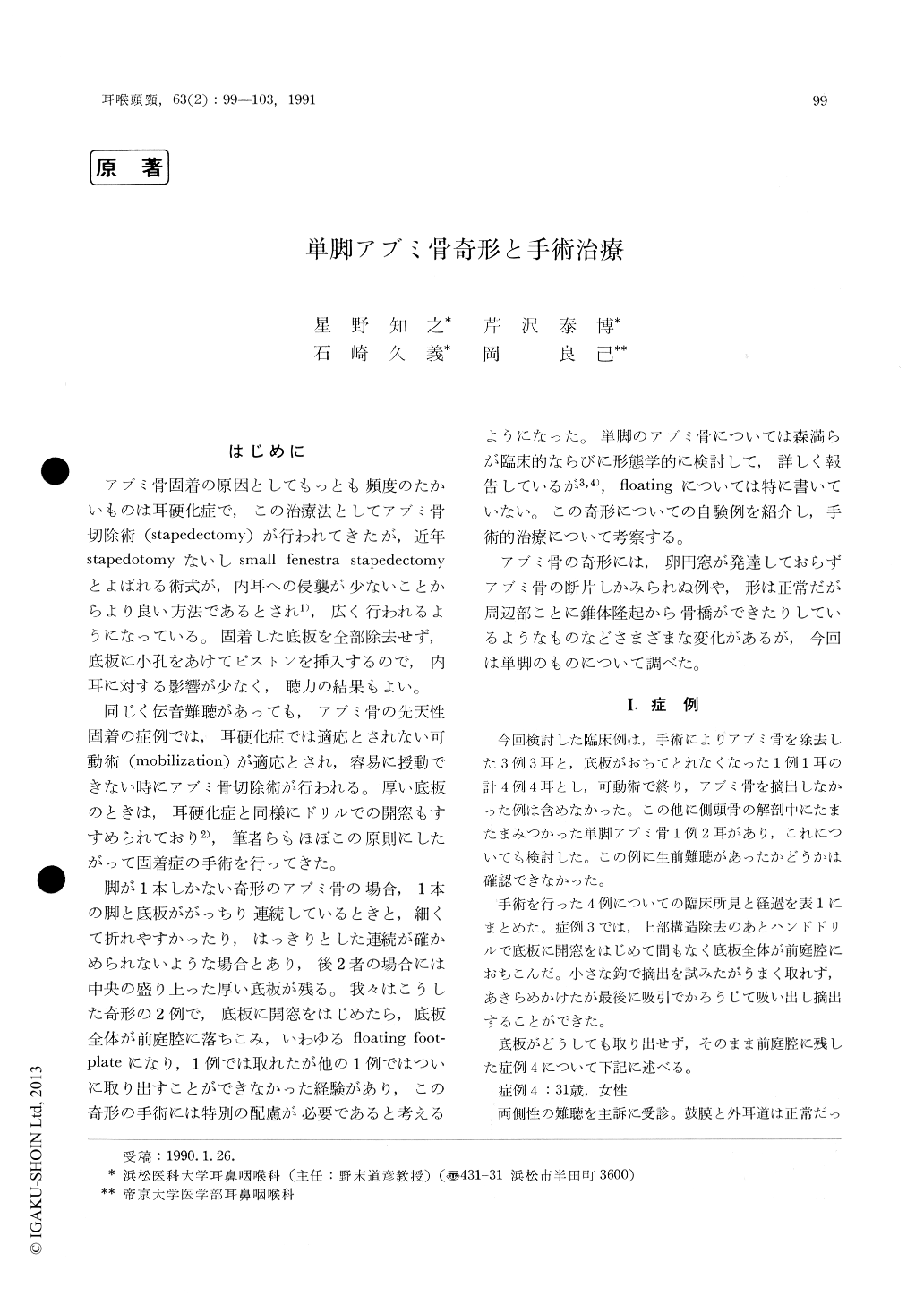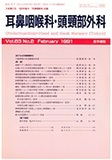Japanese
English
- 有料閲覧
- Abstract 文献概要
- 1ページ目 Look Inside
はじめに
アブミ骨固着の原因としてもっとも頻度のたかいものは耳硬化症で,この治療法としてアブミ骨切除術(stapedectomy)が行われてきたが,近年stapedotomyないしsmall fenestra stapedectomyとよばれる術式が,内耳への侵襲が少ないことからより良い方法であるとされ1),広く行われるようになっている。固着した底板を全部除去せず,底板に小孔をあけてピストンを挿入するので,内耳に対する影響が少なく,聴力の結果もよい。
同じく伝音難聴があっても,アブミ骨の先天性固着の症例では,耳硬化症では適応とされない可動術(mobilization)が適応とされ,容易に授動できない時にアブミ骨切除術が行われる。厚い底板のときは,耳硬化症と同様にドリルでの開窓もすすめられており2),筆者らもほぼこの原則にしたがって固着症の手術を行ってきた。
Four cases of monopodal stapes were reported. In 2 of the 4 cases an attempt to remove the stapes resulted in “floating” of the footplates, and one of them was not recovered from the vestibule. Stapedectomy instead of stapedotomy seemed to be the surgery of choice for this anomaly. Mor-phometry of each footplate of the 3 stapes obtained surgically as well as 2 additional monopodal stapes derived from a temporal bone was done in a computerized analysis system. The mean values of the long and short axes and the areas of the 5 footplates were 65, 78, and 51% of the normal values respectively.

Copyright © 1991, Igaku-Shoin Ltd. All rights reserved.


